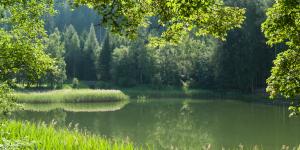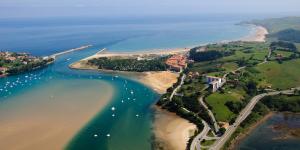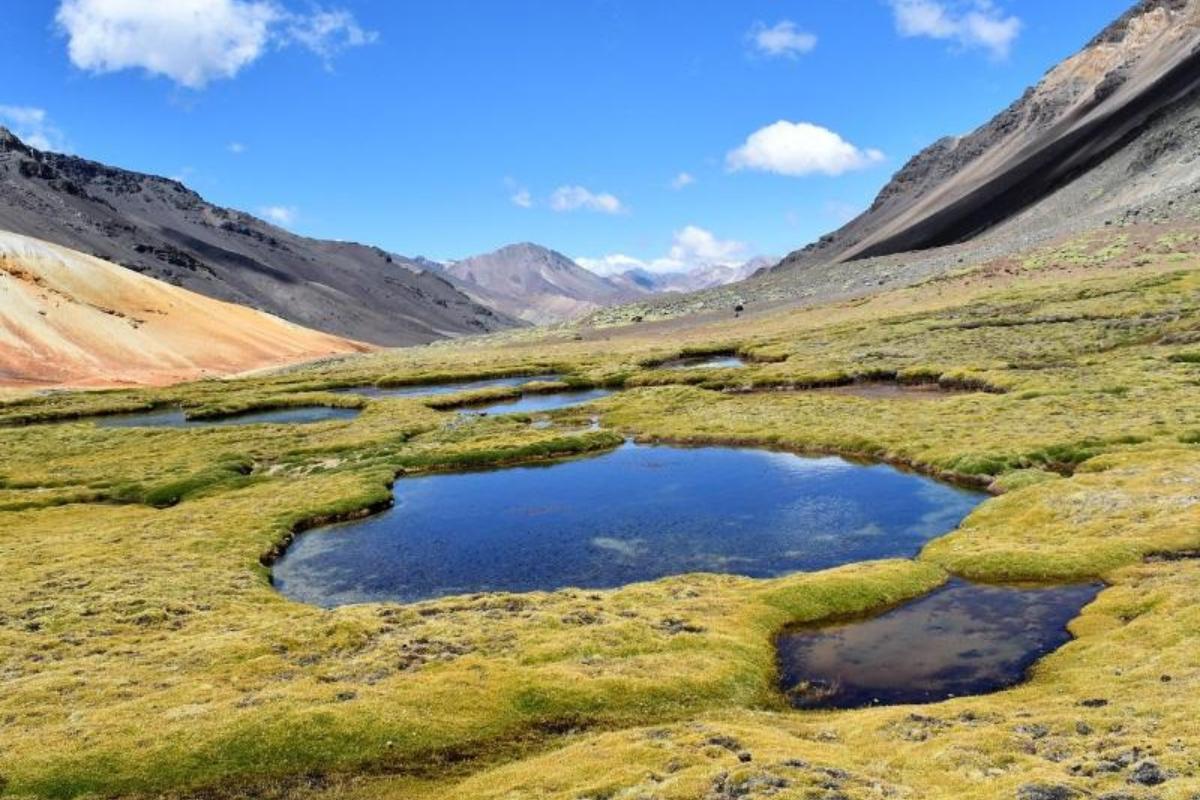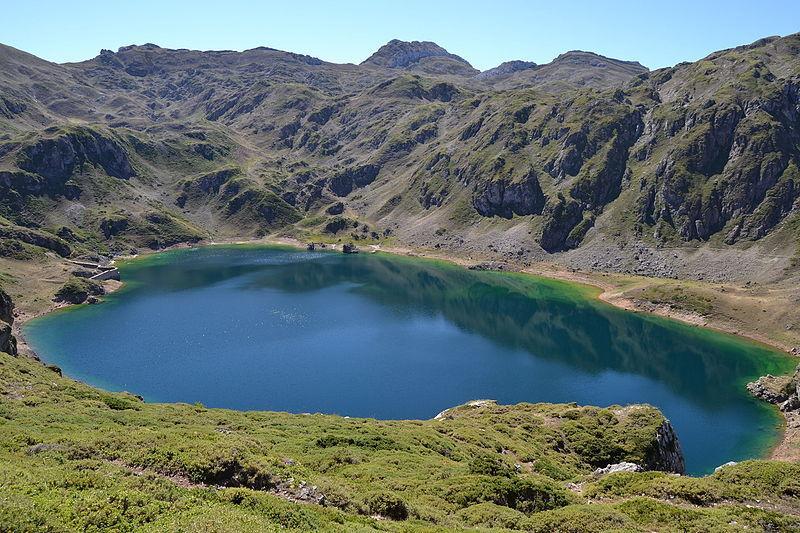What Is a Lentic Ecosystem?


Lentic ecosystems are aquatic ecosystems associated with lakes and other slow-moving bodies of water. As they are a type of ecosystem, they are used to refer to how plant and animal life interacts with their environment as a community. In this case, it is a lentic environment. The types of life which survive and thrive in lentic ecosystems have specific evolutionary adaptations which allow them to do so. They use specific techniques and behaviors to survive these different aquatic ecosystems, both of which are freshwater.
In this thedailyECO article, we ask what is a lentic ecosystem? We look at the characteristics and formation of lentic ecosystems, as well as examples in nature.
Types of aquatic ecosystems
We can classify the different types of aquatic ecosystems into two large groups, depending on whether they are made up of salt or fresh water. While only a general overview, we look at the types of natural aquatic ecosystems that we can find from around the world:
Marine aquatic (saltwater) ecosystems
These ecosystems are those which water that has a very high salinity. Plants and animals are able to live in an environment which has this characteristic. Types of marine ecosystems include:
- Seas and oceans
- Coral reefs and atolls
- Salt marshes
- Mangroves
You can discover more about how we interact with marine ecosystems in our article asking what is the blue economy?
Freshwater aquatic ecosystems
In freshwater ecosystems, the water has low salinity and the organisms which can thrive in them are adapted to its characteristics. Types of freshwater ecosystems include:
- Rivers and streams
- Lakes and lagoons
- Swamps
- Wetlands
Discover more about the last of these freshwater ecosystems with our article detailing what is a wetland?
One of the key differences between these different types of aquatic ecosystems is the behavior of water. An aquatic ecosystem with relatively still water such as a lake or pond is very different to a fast-flowing body of water such as a river. The movement itself has a direct impact on sustainability of flora and fauna, but it also has many indirect impacts. An example might be the movement of sediment which can alter habitats for certain life.
In the next section we will focus exclusively on knowing in detail the main characteristics of lentic ecosystems.
What are lentic ecosystems?
Lentic ecosystems are those freshwater aquatic systems in which, due to their closed structure, their waters remain relatively still or stagnant. These are generally inland aquatic ecosystems in which there is no current flow between their waters.
Throughout the life cycle of lentic ecosystems, their depth will often fluctuate. It is rare they will disappear altogether, although it is possible if outside factors influence them. For example, increased climatic temperature and low rainfall can cause a lake to dry up. Some lentic ecosystems can dry up seasonally, but then return to being an aquatic ecosystem once the rainy season comes. Since they are not directly connected to other bodies of water, lentic ecosystems rely on rainwater.
In all lentic ecosystems we can distinguish three well-marked zones:
- Coastal zone: it is the area closest to the land region, with a large number of flora and fauna species. It is very shallow and receives a large amount of sunlight. The living organisms that inhabit this area of the lentic ecosystem have a large amount of oxygen and nutrients at their disposal. This favors the biodiversity that characterizes these coastal zones.
- Limnetic zone: it is located in the center of the ecosystem, being the intermediate region in which the largest number of fish that make up the lentic ecosystem live.
- Open-water zone: this is the area at the top of the body of water which receives the most sunlight. Life which can live near the surface of the water can inhabit this zone such as algae and otters.
- Deep-water zone: it barely has sunlight and is characterized by the sediments that are deposited on the bottom. This is where benthic organisms live such as mollusks and plant life.
Although they are usually freshwater ecosystems, it is possible for some lentic ecosystems to have higher salinity. This is the case with costal lakes and areas with brackish water. They can have some salt water enter into their ecosystem, but they will not contain as much salt as marine ecosystems. Learn more with our article explaining what is brackish water?
Now that we have seen what lentic ecosystems are and their main characteristics, let's take a closer look at some examples in the next section.

Examples of lentic ecosystems
The different lentic ecosystems present differences in their depth and dimensions. These dimensions are directly related to the amount of biodiversity they can host. The following are the different examples of lentic ecosystems that we find in nature:
Lakes and lagoons
They are the most representative lentic ecosystems and have a medium-large area. There are some deep lakes which can have a depth that reaches below 2,000 meters.
These types of lentic ecosystems are often confused with each other. Learn about the differences between lakes and lagoons in our related guide.
Wetlands and swamps
Both are characterized by being very shallow, which is directly related to the large number of plant species they house. They are often home to various amphibians and reptiles, as well as certain bird species.
Ponds
They are artificial lentic aquatic ecosystems, since they are created by humans with the aim of storing water in closed structures for a specific purpose. They are often used to create a miniature ecosystem such as a koi carp pond.
Rock pools
They very small aquatic ecosystems with small amounts of stagnant water. These lentic ecosystems are ideal for providing water to animals of various groups that are grazing, flying over or simply roaming around the larger body of water.
Wetlands
These lentic ecosystems have the appearance of a large swamp. They are normally formed due to the overflowing of a river or lagoon during the winter months and heavy rain, leaving stagnant waters in the flat areas that constitute the estuary.
Learn more about differentiating between these different aquatic ecosystems with our article explaining the difference between a lake and a swamp.

Difference between lentic and lotic ecosystems
The main difference between lentic ecosystems and lotic ecosystems is their behavior. They are categorized according to their movement and the way in which are are structured. We can look at these differences below:
Behavior of lentic and lotic ecosystems
As we have discovered throughout this article, the main characteristic of lentic ecosystems is that their waters always remain stagnant. They do not have any type of significant flow or current. In contrast, the waters of lotic ecosystems are highly dynamic, characterized by the flow of water which mainly flows in one direction.
Structure of lentic and lotic ecosystems
We have already seen how lentic ecosystems have different zones in their structure (coastal, limnetic, open and deep). Lotic ecosystems are made up of a zone of rapids, i.e. very fast water currents that prevent the deposition of materials in lower areas. They also have a backwater area which is located at depth. Backwaters have slower water currents and allow for the accumulation of various sediments such as silt.
You can discover more about lentic vs. lotic ecosystems in our article explaining the difference between a delta and an estuary.
If you want to read similar articles to What Is a Lentic Ecosystem?, we recommend you visit our Ecosystems category.
- Schindler, D., & Scheuerell, M. (2002) Habitat coupling in lake ecosystems. Oikos, 98, 177–189.
- Ward, J. (1989). The four-dimensional nature of lotic ecosystems. Benthol. Soc., 8, 2–8
- Roselli, L., Fabbrocini, C., & D'Adamo, R. (2009) Hydrological heterogeneity, nutrient dynamics and water quality of a non-tidal lentic ecosystem (Lesina Lagoon, Italy). Estuarine, Coastal and Shelf Science, 84, 539–552.











